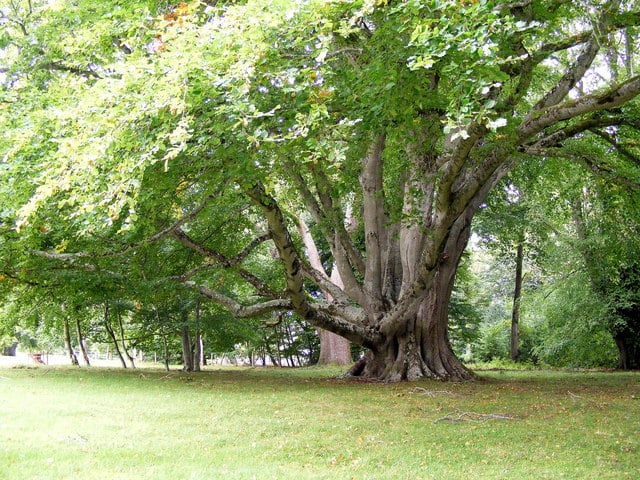Climate change has far-reaching effects on our environment, but it appears as if beech trees are flourishing where they couldn’t survive before due to the changes in forest compositions.
In a study recently published in the Journal of Applied Ecology, a team of researchers took a look at the uncontrolled growth of beech trees and tried to figure out both why it happened as well as the implications it has moving forward.
The study took a look at the US Forest Service Forest Inventory and Analysis data from 1983-2014 across four different northeastern states in order to assess both temporal and spatial changes in the abundance of American beech trees, sugar maple trees, red maple trees, and birch trees. The team also tested how both biotic and abiotic factors affected the distribution of the four species mentioned above.
While the increase in the population of beech trees may seem like a good thing, they’re now taking over the area where other species previously thrived due to their suitedness to the changing conditions. As established trees start to lose their foothold in certain areas due to the warming climate, beech trees continue to expand rapidly and have taken over many areas of the northeastern forest when compared to the population back in the 1980s.
According to the researchers, “In the studied region and over the entire period examined, the distribution of increased occurrence and abundance of beech relative to the three other deciduous species were associated with higher temperature and precipitation as well as higher conspecific basal area and dead tree basal area.”
The spread of beech trees is also concerning considering the species’ prevalence to contract disease.
“[The spread of beech trees] would be a significant management concern as beech is associated with a widespread bark disease, is commercially less desirable, and can limit natural regeneration from other species. Our results emphasize the need for management strategies such as higher intensity harvesting methods, vegetation control and limiting browsing pressure to reduce beech dominance.”
In order to protect our forests from the devastating effects of global warming, changes in policy are required. While much of the damage we have done to our planet may be irreversible, it may be possible to address the looming disaster that climate change represents and prevent the spread of disease from beech trees into the rest of our forest.
With beech trees continuing to spread, there’s an ever-present threat that multiple species of trees could start to become less and less prevalence. While we’re currently not looking at any sort of extinction event, the spread of these invasive trees goes to show just how delicate an ecosystem can be. By throwing a wrench in the natural order of things through human influence, species thrive and die that would have been fine if left alone. Hopefully through quick intervention and widespread change we can keep events like these – and those far more disastrous – from happening in the future.





